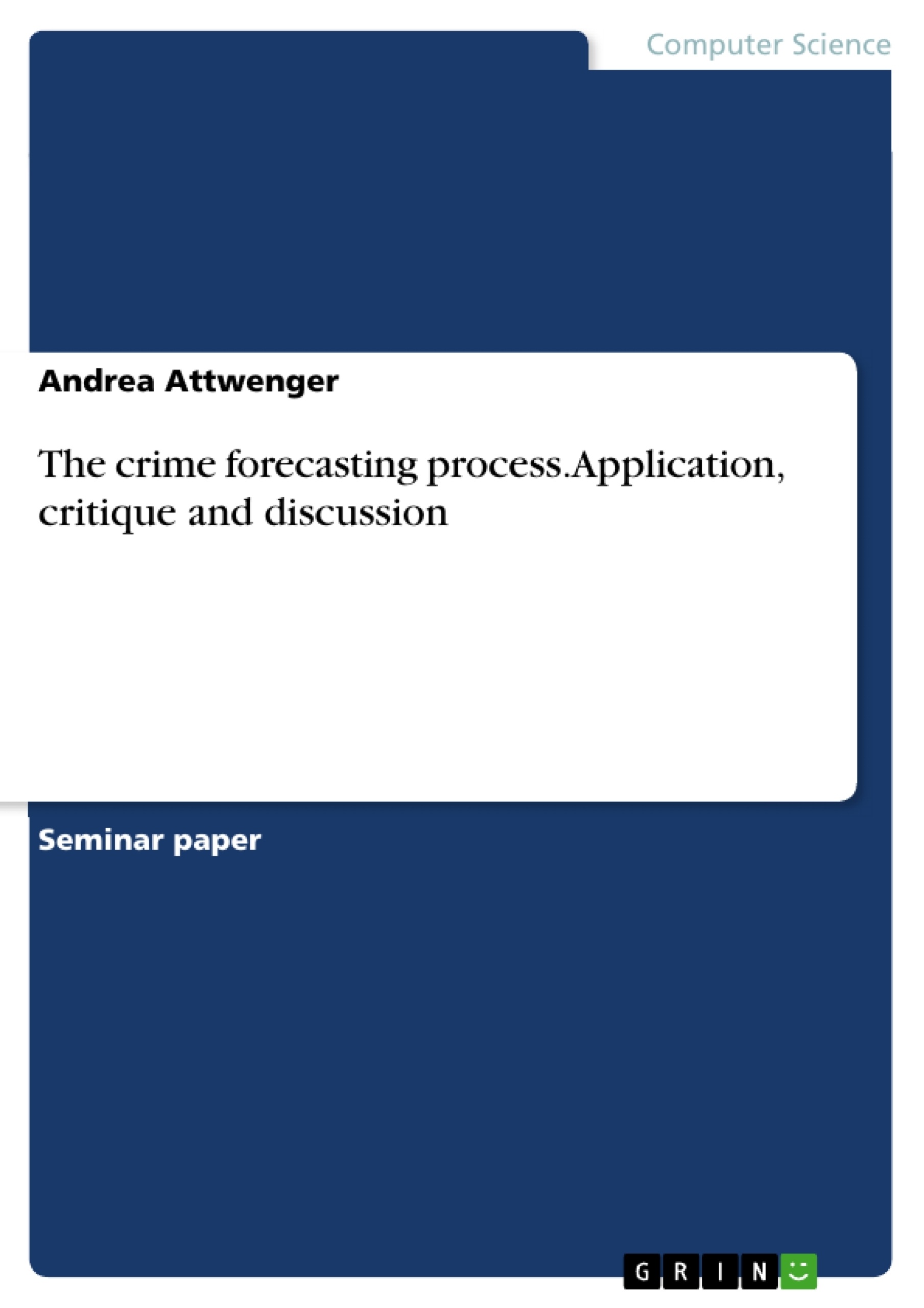The development of new information systems and data mining techniques has made it possible to make predictions of the place, time, victim or perpetrator of a future crime by analyzing past crime reports.
Providing that enough relevant data has been collected before, computational algorithms can be used to find patterns and forecast crimes. Underlying theories make use of criminological findings such as the increased threat to areas already targeted once or to areas close to a victimized neighborhood.
The usage of computers allows for a quicker and more effective analysis as well as the discovery of patterns otherwise not humanly detectable. In order to be effective, forecasts need to be followed by concrete measures. They can be used to plan police operations and specifically deploy forces and resources in realtime.
This paper describes the most important steps of the crime forecasting process.
Inhaltsverzeichnis (Table of Contents)
- I. INTRODUCTION.
- II. THE CRIME FORECASTING PROCESS.
- A. Data generation
- B. Predictive analytics.
- III. THE APPLICATION OF PREDICTIVE POLICING
- IV. CRITIQUE AND DISCUSSION
- V. CONCLUSION AND PROSPECT
Zielsetzung und Themenschwerpunkte (Objectives and Key Themes)
This paper focuses on the application of crime forecasting techniques in modern policing, exploring how data analysis and predictive algorithms can be used to anticipate and potentially prevent future criminal activity. The paper aims to outline the crime forecasting process, highlighting the key steps involved in data collection, analysis, and prediction. It also explores the practical applications of predictive policing and the challenges and criticisms associated with this approach.
- The development of crime forecasting as a predictive policing strategy.
- The process of data collection and analysis in crime forecasting.
- The application of predictive analytics to identify areas and individuals at risk.
- The potential benefits and limitations of predictive policing.
- The ethical and social considerations surrounding the use of crime forecasting.
Zusammenfassung der Kapitel (Chapter Summaries)
- I. INTRODUCTION. This chapter introduces the concept of crime forecasting and its potential to revolutionize policing. It highlights the use of data analysis and predictive algorithms to identify high-risk areas and individuals. The chapter also discusses the potential for crime forecasting to shift policing from a reactive to a proactive approach.
- II. THE CRIME FORECASTING PROCESS. This chapter delves into the core mechanics of crime forecasting. It discusses the process of data generation, which includes collecting and representing relevant information, and predictive analytics, which involves using algorithms to identify patterns and make predictions. The chapter emphasizes the crucial role of data quality in generating accurate forecasts.
- III. THE APPLICATION OF PREDICTIVE POLICING. This chapter explores the practical application of crime forecasting in policing. It discusses how predictive models can be used to inform police deployment, allocate resources, and prioritize interventions. The chapter highlights the potential of predictive policing to improve crime prevention and response efforts.
- IV. CRITIQUE AND DISCUSSION. This chapter examines the potential pitfalls and challenges associated with crime forecasting. It explores concerns regarding over-reliance on predictive models, the potential for bias and discrimination, and the need for transparency and accountability in the application of predictive policing.
Schlüsselwörter (Keywords)
This paper examines the key concepts of crime forecasting, predictive policing, near-repeat theory, and the ethical considerations surrounding the use of predictive algorithms in law enforcement. It explores the role of data analysis, pattern recognition, and resource allocation in crime prevention efforts. The paper emphasizes the potential of these technologies to improve public safety while also acknowledging the need for careful consideration of potential biases and ethical implications.
- Quote paper
- Andrea Attwenger (Author), 2016, The crime forecasting process. Application, critique and discussion, Munich, GRIN Verlag, https://www.grin.com/document/315743



